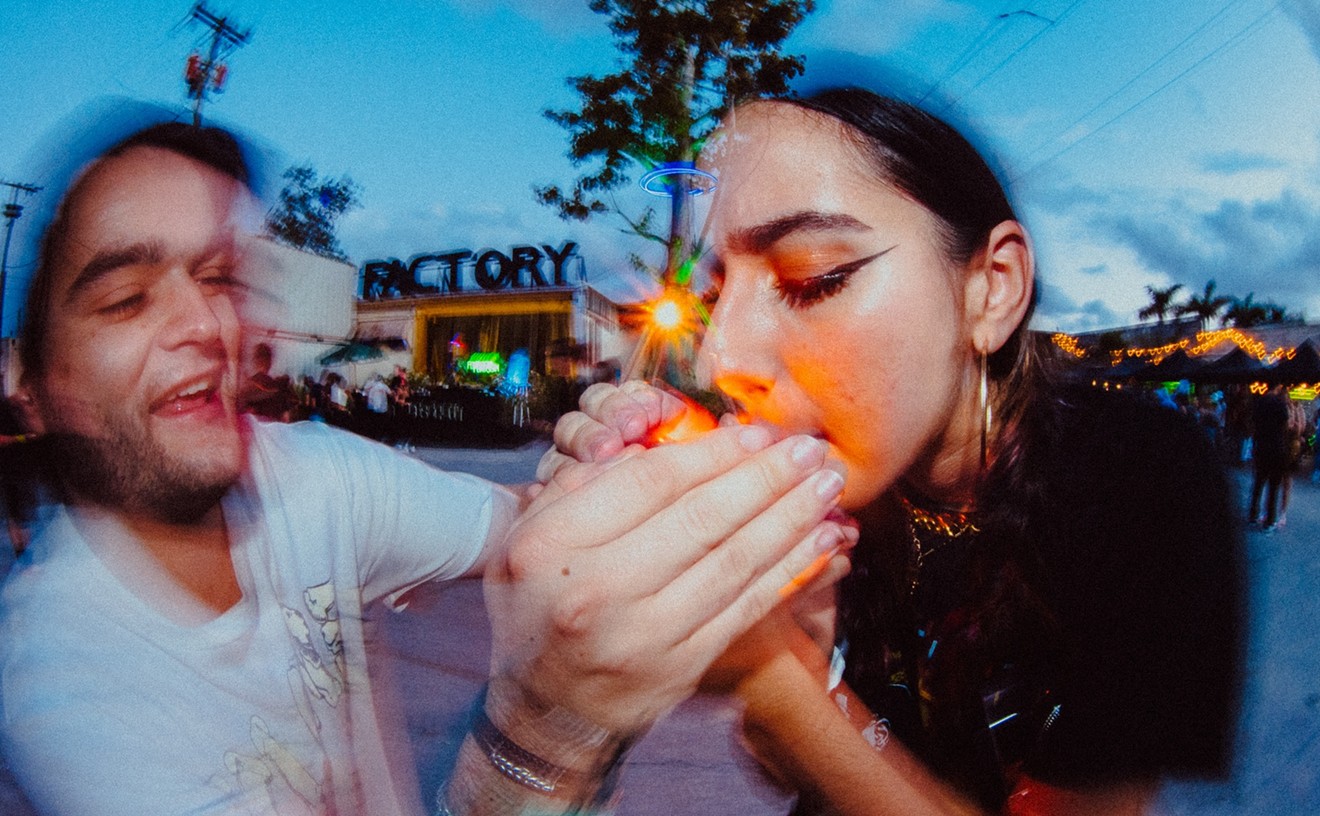Duran Duran boasts a rare longevity in the world of pop music — 12 albums and some 30 years in the business. The group's two distinguishing members, synth master Nick Rhodes and vocalist Simon Le Bon, still speak to each other. Fans have accustomed themselves to the periodic, reptilian sloughing of their old selves. But even the most hard-core were surprised when the band popped in the latest effort, The Red Carpet Massacre, last December. There was a very late-aughts R&B radio rattle; a tripped-out, low-end bass bump; and ... wait, was that Timbaland chanting deep in the mix of a track?
"I think we knew when we made the album that it would be received with mixed reactions," says the ever-cheerful, loquacious Rhodes. "There's obviously the more traditional sound of Duran Duran, which people are used to and comfortable with, but then there's our urge to do something different each time." And that's where fans are forced to concede there simply is no traditional Duran Duran sound.
Rather, there's an overall ethos — one of experimentation and reinvention, of welding the latest sensibilities to the electronic sounds that percolated when the group sprung out of Birmingham, England's early-Eighties New Romantic scene. The hits from those days — such as "Hungry Like the Wolf" and "Rio" from 1982's Rio — remain stuck in the collective pop consciousness. They are glossy, chrome-tinted, keyboard-driven numbers at once eminently hummable and danceable. But as early as 1986, the group's direction was shifting — and out popped the heavy funk of "Notorious." Then in the early Nineties, there was the almost introspective bent of songs such as "Ordinary World." And even later in the decade came an alt-rock turn. The Red Carpet Massacre, then, is the logical conclusion to all of this — a return to the primacy of the groove, but updated.
It also marks the group's most collaboration-heavy effort to date. Of the album's 12 tracks, eight were produced and co-written with Nate "Danja" Hills, a Timbaland protégé known for his work with Nelly Furtado and Justin Timberlake. Timbaland appears on three other tracks, and Timberlake on two; both were self-professed Duran Duran fans who first met the band at the MTV Video Music Awards four years ago. "When you meet people for the first time and find out there's a mutual admiration, you often say, 'Oh, we should do something together,' and then you never see them again," Rhodes says. "But in this case, we really did love Timbaland's work, and particularly the stuff he'd done on Justin's first album, and for Missy Elliott, and so we sort of clung onto — as did they — the idea of doing something somewhere along the lines." Eventually, in the fall of 2006, everyone wound up with five free days in New York. And from a marathon of rapid-fire, late-night back-and-forth in the lab, the nucleus of The Red Carpet Massacre was born.
Ceding so much creative control was a change for everyone involved. And in a room full of megatalents, it could have been a recipe for disaster. Rhodes, however, sounded elated when discussing the novelty of the process and its unexpected results. "The most exciting work was when we all plugged into the kit and then jammed together," he says. "Timb is on a keyboard and he samples, and Danja is doing the same thing on the other side of the room. And then it's me on keyboards in the control room, and then Roger [Taylor] out in the live room playing drums, and Simon on the microphone in the live room, and John [Taylor] playing a bass next to Timbaland. And the sound that we all made together was really inspirational. You just didn't know what would come out of everybody.
"Skin Divers," a product of this method, is one of the album's real standouts. Based on tinkling keys, rattling drums, and a swinging, snapping guitar riff, it's infused with a dark, almost menacing R&B flavor. There are Timbaland's signature dovetailing and layered tracks, as well as his voice used for syncopated effect. But the song's rolling dance-floor drive, as well as Le Bon's distinctively crafted vocal melodies, are pure Duran Duran.
"Falling Down," another standout, was written and produced with Justin Timberlake. It boasts a similar slinky electronic soul. And Le Bon's voice is used almost as an instrument over robot-hop beats. The tracks are both lushly padded and conservative, with the beat the critical thing — a sort of intelligent populism that all parties share. If Timberlake, Timbaland, and Danja had been around in Duran Duran's first heyday, they might have worked together then.
Critical reception for The Red Carpet Massacre, however, was mixed. Rolling Stone rated it only three stars out of five, but still gave a nod to its "classic Durannie funk." Spin offered a similar rating, and Entertainment Weekly delivered a B+. Notoriously mercurial British weekly NME, however, gave it just four out of 10, calling the matchup "bloated and uncomfortable."
No matter, though, because Duran Duran's tour in support of the disc has been doing brisk business in ticket sales. The high-energy, three-act live show that mixes up new and old favorites is exciting fans. "Songs like 'Skin Divers' and 'Night Runner,' they blend into the set absolutely perfectly, as does 'Falling Down,'" Rhodes says. 'The people that have the record already are loving the songs live, and the people that don't have the record yet are starting to think, Okay, that's kind of interesting."
The sets, as well, show both a creative stretch and a return to the band's spiritual roots. While the first and third ones form a sort of best-of revue, the middle comprises a much-heralded "electro set" that was developed during the band's album-release two-week stand on Broadway. "It's more of a club sound, because there's a lot of thumping electronic drums, and it's quite sparse, because we've stripped the songs down a lot more," Rhodes says. "We've done the acoustic-guitar thing before, the sort of traditional, this-is-what-our-song-sounds-like-without-all-the-augmentation-and-the-arrangement thing. But this seemed very appealing.
"We're always looking for a new way to represent ourselves," he sums up. "That's what keeps it exciting."
Read the full Q&A with Nick Rhodes on our music blog, CrossFade.










